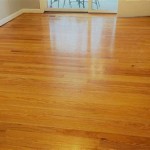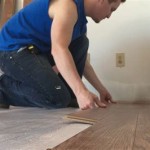Casita Floor Plans: Exploring the Potential of 2-Bedroom Designs
Casitas, often translated as "little houses," represent a growing trend in residential design. They offer a versatile solution for diverse housing needs, ranging from guest accommodations and in-law suites to compact primary residences and rental units. The 2-bedroom casita floor plan is particularly popular due to its balance between livability and efficient use of space. This article explores the characteristics, benefits, and design considerations associated with 2-bedroom casita floor plans.
The increasing demand for smaller, more sustainable, and cost-effective housing options fuels the popularity of casitas. Building codes and zoning regulations often accommodate accessory dwelling units (ADUs) or detached guest houses, making casitas a viable option for homeowners seeking to expand their property's functionality. A 2-bedroom layout enables a comfortable separation between living and sleeping areas, making it suitable for individuals, couples, small families, or even housemates.
Key Benefits of 2-Bedroom Casita Floor Plans
A 2-bedroom casita floor plan offers several advantages compared to smaller or larger designs. The ability to accommodate multiple occupants or provide dedicated space for specific activities makes it a flexible housing solution. Several key benefits contribute to its appeal:
Versatility of Use: The presence of two bedrooms immediately expands the potential applications of the casita. It can serve as a guest house, providing private and comfortable accommodations for visitors. It can function as an in-law suite, offering independent living space for elderly parents or other family members while maintaining proximity. Furthermore, it can be utilized as a rental unit, generating income for the homeowner. Finally, it can simply be a dwelling for a smaller family or even a single person or couple who desire a guest room, home office or creative space.
Enhanced Privacy and Comfort: Separating the sleeping quarters from the living areas enhances privacy and comfort for occupants. This separation is particularly beneficial when the casita is used for guest accommodation or rental purposes. The residents can enjoy a degree of independence and autonomy that might be missing in other types of accommodations. This is especially important when shared walls exist with the main residence.
Increased Property Value: Adding a 2-bedroom casita to a property can significantly increase its overall value. The additional living space and potential income-generating capacity make the property more attractive to potential buyers. The specific impact on property value will depend on factors such as location, zoning regulations, and the quality of construction and design of the casita.
Essential Design Considerations for 2-Bedroom Casitas
Designing a 2-bedroom casita requires careful consideration of space utilization, functionality, and aesthetics. The goal is to create a comfortable and livable environment within a relatively compact footprint. Some design considerations are:
Space Optimization: In a small space, maximizing available area is essential. Open-concept layouts combining the living room, dining area, and kitchen can create a sense of spaciousness. Utilizing vertical space with high ceilings or loft areas can provide additional storage or sleeping space. Built-in storage solutions, such as shelving and cabinets, can help minimize clutter and maximize usable floor space. Multifunctional furniture, such as sofa beds or dining tables that can be converted into desks, can further optimize space utilization.
Natural Light and Ventilation: Adequate natural light and ventilation are crucial for creating a comfortable and healthy living environment. Large windows and skylights can bring in natural light while also offering views of the surrounding landscape. Proper ventilation, including cross-ventilation, can help regulate temperature and reduce humidity. Position the casita strategically to leverage natural light and prevailing breezes.
Privacy and Sound Insulation: Ensuring privacy is important, especially if the casita is located close to the main house or other structures. Strategically placing windows and doors can minimize visual intrusion. Sound insulation measures, such as insulated walls and windows, can reduce noise transmission between the casita and its surroundings. Consider the placement of bedrooms relative to common areas and exterior noise sources.
Accessibility: If the casita is intended for use by elderly or disabled individuals, accessibility should be a primary design consideration. Features such as ramps, wider doorways, grab bars, and accessible bathrooms can make the casita safe and comfortable for all occupants. Universal design principles should be incorporated to ensure that the casita is usable by people of all abilities.
Local Building Codes and Regulations: Compliance with local building codes and zoning regulations is essential for any construction project. Before starting the design process, it is important to research and understand the applicable codes and regulations, including those related to ADUs or detached guest houses. These regulations may specify requirements for setbacks, height restrictions, parking, and other aspects of the design. Obtain all necessary permits before beginning construction.
Exploring Different 2-Bedroom Casita Floor Plan Layouts
Several different floor plan layouts can be used for a 2-bedroom casita, each with its own advantages and disadvantages. The optimal layout will depend on the specific needs and preferences of the occupants, as well as the size and shape of the available space. Here are a few common layouts:
Linear Layout: In a linear layout, the rooms are arranged in a straight line, with the living area at one end and the bedrooms at the other. This layout is well-suited for narrow lots or when the casita is attached to the main house. A hallway typically connects the different rooms. This configuration can easily lend itself to being ADA compliant.
Open-Concept Layout: An open-concept layout combines the living room, dining area, and kitchen into a single large space. The bedrooms are typically located off to the sides or at the back of the casita. This layout creates a sense of spaciousness and is ideal for maximizing natural light. This design offers flexibility for furniture placement but can be more challenging for sound and visual privacy.
Split Bedroom Layout: A split bedroom layout places the bedrooms on opposite sides of the living area, providing greater privacy for occupants. This layout is often used when the casita is intended for use by unrelated individuals or for rental purposes. The shared living space will encourage interaction while preserving some privacy.
Courtyard Layout: A courtyard layout incorporates a central courtyard that is surrounded by the casita's rooms. The courtyard can provide natural light, ventilation, and outdoor living space. This layout is well-suited for warmer climates and creates a private and secluded atmosphere. It is also well suited for entertaining as the courtyard becomes an extension of the indoor living space.
Stacked Layout: If space is limited, a stacked layout with two floors may be the only option. This layout can maximize the usable square footage on a small lot. The first floor typically contains the living area and kitchen, while the bedrooms are located on the second floor. Stacked layouts require careful consideration of stair placement and design to ensure safety and accessibility.
The specific orientation of the casita on the lot and prevailing weather conditions can impact the layout and can also influence the design of the passive heating and cooling systems. Ideally, a casita should be designed to minimize its environmental impact and maximize its energy efficiency. This may involve using sustainable building materials, incorporating solar panels, and implementing water conservation measures. The position of the casita relative to existing trees and landscaping should be considered to maximize shade and minimize heat gain.
Selecting the appropriate materials is vital for both the aesthetic appeal and the longevity of the casita. Durable and low-maintenance materials, such as stucco, brick, or fiber cement siding, are ideal for exterior walls. Natural materials, such as wood and stone, can add warmth and character to the interior. The choice of flooring materials should also consider durability, comfort, and ease of cleaning. In terms of interior design, carefully consider elements such as color schemes, lighting fixtures, and window treatments to create a cohesive and inviting space.
Ultimately, a well-designed 2-bedroom casita floor plan can provide a comfortable, functional, and aesthetically pleasing living space. By carefully considering the design elements and benefits outlined above, homeowners, builders, and designers can create casitas that serve a variety of purposes and enhance the value and appeal of any property. The integration of thoughtful design principles and sustainable building practices will ensure that the casita provides a valuable and lasting asset for years to come.

Hayden Park Apartments In Scottsdale Az Rentcafe

Casita Is The Perfect Home Office Guest Quarters Or Mother In Law Suite

Deluxe Life House Plan Two Story Modern Casita Home Design Mm 3706

Casita C 2 Bed Apartment Boca Raton

54 Casita Plans Ii Ideas House Small Floor

4 House Plans With Casitas Blog Dreamhomesource Com
The Casita From Tilson Homes Custom Home Builders In

Las Casitas

Katydid Casita

Casita Guest House Floorplan Los Angeles By American Building Innovation Lp Houzz







